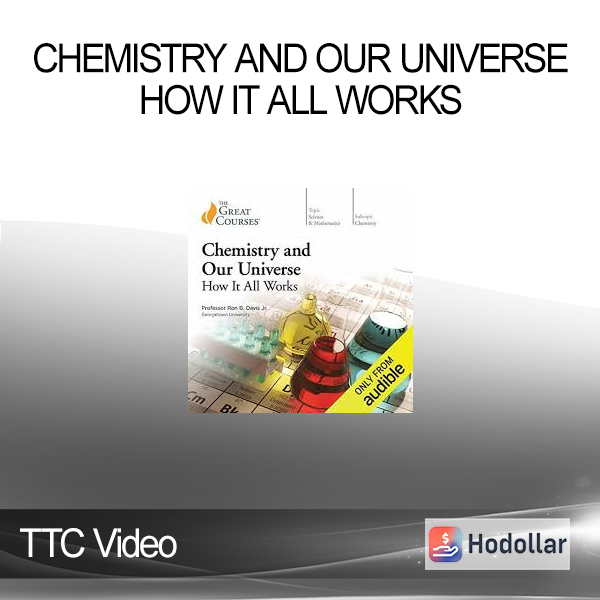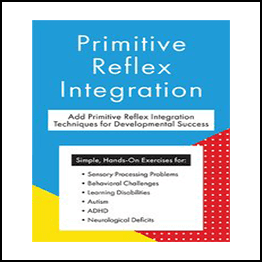TTC Video – Chemistry and Our Universe – How it All Works
TTC Video – Chemistry and Our Universe – How it All Works
What are you going to learn?
- Learn the units that deal with matter at the Atomic Scale.
- Take a look at the atoms and Molecules can create and consume molecules and Transport the most essential commodity in the universe: Energy
- Examine the physical properties of the most common phases in matter, such as solids and liquids. and gases.
- Graham’s law is a link between the mass of gas particles and the rate at which the particles escape through a small aperture. This process is known as effusion.
- You can regulate acid to achieve the desired pH.-Base reactions
- Check out the chemicals that could harm your health and Compare the differences between a poison and a toxin. and A venom.
Chemistry Is the study of matter and Energy at the scale of atoms and molecules. As the most important-Acceptance of discipline is key. it should be at the top of everyone’s list of must-Learn about subjects. Chemistry is a difficult subject that has earned a poor reputation. and abstraction. Complexity is the hallmark of any subject that includes as many components as Chemistry. It is the discovery of how logically and consistently organized chemistry is that what makes it so fascinating to study. and Easily predictable it becomes—if properly presented.
Chemistry and Our Universe: How It All Works Your in-This vital field was introduced in depth by over 60 visually inventive half-degrees-Hour-long lectures that are appropriate for all levels of chemistry, regardless our backgrounds. Covering a year’s worth of introductory general chemistry at the college level, plus intriguing topics that are rarely discussed in the classroom, this amazingly comprehensive course requires nothing more advanced than high-school math. Simple concepts and logical reasoning are used and These lectures provide a clear explanation of the fundamental concepts with vivid graphics that highlight the wonders and mysteries of chemistry. The best part is that this interactive approach includes extensive hands.-You will see dramatic demonstrations that will allow you to gain incredible insight into the workings of the universe.
Professor Ron B. Davis, Jr., is your guide, a research chemicalist and Award-Georgetown University’s winning teacher With passion and Professor Davis, with his humor, guides you through the fascinating realm of atoms and molecules. and Their constant interactions will teach you how to think, solve problems and communicate with others. and Predict outcomes with the accuracy of an expert in the field.
A Chemistry Course like no other
Chemistry and Our Universe is ideal for anyone curious about the underlying unity of the material world or interested in such subjects as cooking, painting, metalworking, pottery, auto mechanics, gardening, energy production—there are countless everyday uses of chemistry. These lectures have many universal applications. The course will also appeal to those currently involved in chemistry—from chemistry students in high school or college to health professionals, scientists, managers in industry, and Others who need a refresher course from an exceptional teacher to gain new insight.
The computer can do amazing things for anyone who has ever sat through introductory Chemistry in a lecture hall.-Generated graphics and 3-You can make your subject more interesting with D animations and It’s not hard to understand why Professor Davis collaborated closely with The Great Courses Production Team to create a chemistry course unlike any other.
- A Virtual reality studioProfessor Davis leads the course from an Augmented Reality Set. Here he interacts chemical equations, splits and rotates molecules, tracks reactions and highlights key points. and Otherwise brings chemistry to life and shows how chemists think about it.
- A real chemistry laboratoryEvery Chemistry course requires a lab. and Professor Davis frequently visits a real laboratory to examine the phenomena he just discussed in lecture. Safety glasses, lab coat and a hazardous materials permit are required, so don’t try these experiments at home!
- Using kitchen chemistry: These are These demonstrations are performed in a kitchen by Professor Davis. The majority of kitchen cabinets are well ventilated.-Stocked with materials for chemistry experiments. The incompressibility phenomenon of liquids means that a wine bottle can be opened with no corkscrew.
- Expanded Reviews and Practice: Each lecture ends with a review and sometimes a challenge question to help you understand the material. and let you test your understanding. The accompanying guidebook reprints all of the challenge problems—and more—with worked-Find solutions.
Set the Periodic Table
Open any chemistry textbook or walk into any chemistry classroom. and You will also see the periodic table. You can also view it on T-T-shirts, coffee cups, and sneakers and Even dining tables, especially in close proximity to universities. While committing the elements of chemistry to memory can be a problem for many students starting chemistry, once you understand the basic rules of deciphering they will not be a problem. itThis compendium of data is remarkably easy to use. Under Professor Davis’s expert guidance, you learn to read the many levels of information in the periodic table; see how it Properties such as melting are predicted and Boiling points and Learn why gaps exist and Dmitri Mendeleev’s first drafts of the table led to important breakthroughs in chemistry.
Simply by ordering the known chemical elements—the different atoms that constitute matter—by their relative weights, Mendeleev was able to discover patterns among elements with similar properties. The table’s early versions proved to be an invaluable treasure map that pointed the way to new elements and properties. and This hinting at new atomic features yet to be discovered. One of these features was the electron. It is in the many configurations around atoms that the electron explains the most important characteristics of the chemical world, the bonding of molecules to atoms. and How atoms work and molecules combine and In chemical reactions, recombine.
Meet Chemistry’s Greatest Thinkers
As you make your way through, Chemistry and Our UniverseYou will gain an understanding of how atoms can be combined to make a wide range of materials. By the last part of the course, you will be ready to survey the complex chemistry of entire systems—and Lectures on the Earth, the Oceans, and the Atmosphere offer the chance to do this. and The cosmos itself.
Throughout the course, you meet dozens of major figures in the history of chemistry—great scientists such as Antoine Lavoisier, Joseph Priestley, John Dalton, Marie Curie, Svante Arrhenius, Robert Millikan, Alexander Fleming, and Linus Pauling to name a few. Learn about their lives and the mysteries they tried to solve. and These innovations were named after new equations, principles or scientific laws. You often see demonstrations of their key insights that help to cement key concepts in your brain.
- Predicting reactions: Two experiments—combusting hydrogen gas and dissolving ammonium nitrate—set you thinking about exothermic versus endothermic reactions, as first described by James Joule and Ludwig Boltzmann. Then derive J. Willard Gibbs’s ingenious equation for predicting which direction a reaction will take.
- Gas laws: Robert Boyle’s gas law tells you how to inflate a balloon to full volume with a single breath. With Jacques Charles’s law, you can restore a dented ping-Return the pong ball to its original form. Learn the gas laws of Joseph Louis Gay-Lussac and Amedeo Avogadro. The famous ideal gas law can be derived by combining all four equations.
- Historic synthesisHenry Le Chatelier observed that equilibrium chemical systems adjust to new equilibrium when disturbed. This is what you can see in the lab. and learn how Fritz Haber exploited it in a groundbreaking application—the synthesis of ammonia from nitrogen and Hydrogen is essential for fertilizers and explosives.
- Splitting the Atom: Atoms uranium-Two neutrons are released when 235 fissions (split apart) occur. These neutrons can then cause further fissions. The reaction can be self-sustaining if there are enough neutrons.-Sustaining, an event that Enrico Fermi was the first to achieve. How does Professor Davis demonstrate a chain reaction safely? With 96 mousetraps and ping-Pong balls
Put on Your ‘Chemistry Glasses”
As one would expect from a subject that covers the whole of the physical world, your journey in Chemistry and Our Universe It covers a lot of ground. After Lecture 60, you’ll have surveyed the field and learned the fundamental principles. and Prepared for deeper exploration in higher-level courses. You will be able, with an improved understanding, to read science news articles and talk with chemists. and You can share your informed opinions on the chemistry behind public policy issues like energy production and Climate change
Above all, you will find that you have acquired a delightful accessory that adds a new dimension to life: ‘chemistry glasses.” Wherever you look—in the medicine chest, in the natural world, in a kitchen drawer, anywhere—you will see things in a fresh and In an exciting way. You can take this as an example:
-
- Medicines: Chemistry This article explains how medicines work. Professor Davis tracks the secretive mission of the ibuprofen-molecule as it unfolds. it Slips into an enzyme’s active site, which stimulates inflammation. This reduces swelling and pain. We also examine the mechanisms of antibiotics and Anti-cancer drugs.
- Poisons, toxins, and VenomsLearn more about poisons and toxic substances and Venoms are different, and there are examples for each and The chemical reasons for their deadly effects. The periodic table clearly shows that poison arsenic can be substituted for phosphorus in biological systems.
- Tarnish no more! Professor Davis’ lecture on redox reactions reveals that aluminum ranks higher in the activity series of metals that silver. This means that the silver sulfur ions of silver readily give up electrons for aluminum. Aluminum foil makes a great anti-tarnish agent. For more information, visit the internet. it.
- Water: Ubiquitous on Earth and in space, water has a special place in chemistry because of its unique properties, which relate to the molecule’s bent shape and covalent bond. The importance of water is covered throughout the course, from the macro level to the micro—including why steam cleaning is so phenomenally effective!
”Chemistry is Wonderful!”
Early in the course, Professor Davis presents the pioneering research on the chemical bond by one of history’s greatest chemists, Linus Pauling, whose work won him the 1954 Nobel Prize in Chemistry. Pauling is a role model in seeing the bigger picture. His understanding of the events in the nuclear realm helped him see the immense dangers that are posed by nuclear tests. and His efforts for nuclear disarmament earned him the Nobel Prize for Peace in 1962.
After he retired, Pauling gave a talk at which he couldn’t help promoting his field. ‘Chemistry is wonderful!” he exclaimed. ‘I feel sorry for people who don’They don’t know much about chemistry. They are missing an important part of life, an important source of happiness—satisfying one’s intellectual curiosity. The world is amazing and Chemistry is an important aspect of it.” After you finish these exhilarating lectures, you’ll know exactly what he means.
-
1Is Chemistry Science of Everything
-
2Matter and Measuring
-
3Wave Nature of Light
-
4Particle Nature of Light
-
5Basic Structure of Atom
-
6Electronic structure of the Atom
-
7Periodic Trends – Navigating the Table
-
8Compounds and Chemical Formulas
-
9Joining Atoms The Chemical Bond
-
10Mapping Molecules Lewis Structures
-
Theory of 11VSEPR and Molecular Geometry
-
12Hybridization for Orbitals
-
13Molecular Oral Theory
-
14 Communication Chemical Reactions
-
15Chemical Accounting: Stoichiometry
-
16Enthalpy and Calorimetry
-
17Hess’s law and The heat of formation
-
18Entropy: Randomness and its Role
-
19Influence: Free Energy
-
20Intermolecular Forces
-
21Phase changes in matter
-
22Behavior of gases: Gas Laws
-
23Kinetic Molecular Theory
-
24Liquids and Their Properties
-
25Metals and Ionic Solids
-
26Covalent Solids
-
27Mixing It up: Solutions
-
28Solubility and Saturation
-
29 Colligative Properties of Solutions
-
30Modeling Reaction rates
-
31Temperature and Reaction Rates
-
32Reaction Mechanisms and Catalysis
-
33The Back and Fourth of EquilibriumWhat happens when reactions are reversed? Reactions that occur simultaneously in both direction can be studied to find a dynamic equilibrium. Concentrate on homogeneous equilibrium, which involves reactants and Products that are in the same phase. Followed by an introduction to the reaction coefficient.
-
34Manipulating Chemical Equilibrium
-
35Acids, Bases, and The pH Scale
-
36 Weak Acids and Bases
-
37Acid-Base Reactions and Buffers
-
38Polyprotic Acids
-
39Structural Basis of Acidity
-
40Electron Exchange: Redox Reactions41Electromotive Force and Free Energy
-
42Storing Electrical Potential: Batteries
-
4Nuclear Chemistry and Radiation
-
44Binding energy and The Mass Defect
-
45 Things to Break Down
-
46 Building Things Up: Nuclear Fusion
-
47Introduction To Organic Chemistry
-
48Heteroatoms and Functional groups
-
49Reactions Organic Chemistry
-
50Synthetic Polymers
-
51 Biological Polymers
-
52Medicinal Chemistry
-
53Poisons, Toxins, and Venoms
-
54Chemical Weapons
-
55Tapping Chemical Energy – Fuels
-
56 Unleashing chemical energy: Explosives
-
57Chemistry on the Earth
-
58Chemistry Our Oceans
-
59Atmospheric Chemistry
-
60Chemistry, Life, and Cosmos
Here’s What You Will Get In TTC Video – Chemistry and Our Universe – How it All Works

Shipping method
– After making a purchase, you will see a View your order link to the Downloads page. Here you can download all the files related to your order.
– In case the link is broken for any reason, please contact us and we will resend a new download link.
– If you can’t find the download link, please don’t worry about it. This course is usually available and shipped within one day
– The course you purchased will have lifetime access
– Our support staff is the best by far! Please contact us at email: [email protected] and we will be happy to help!









